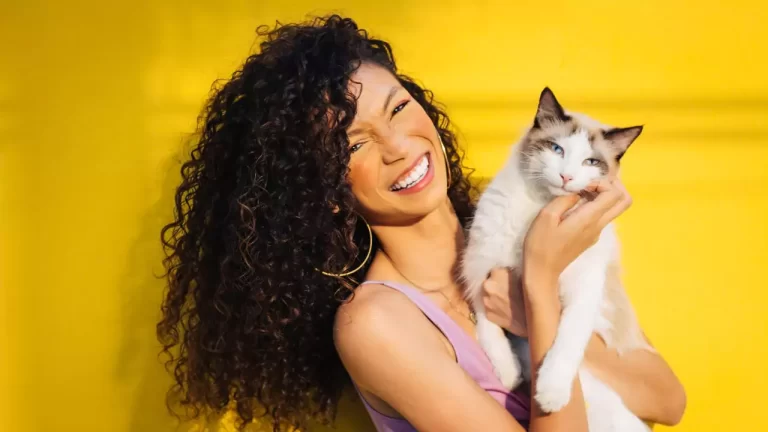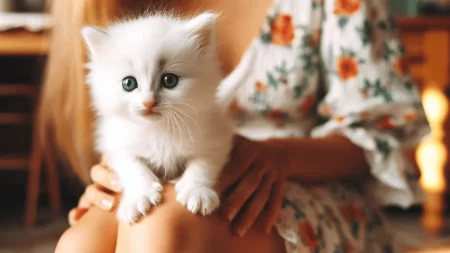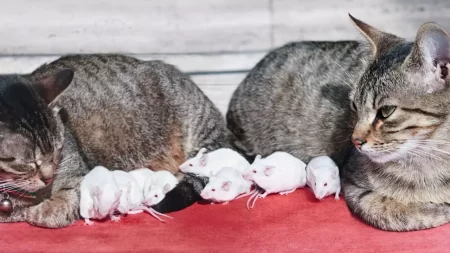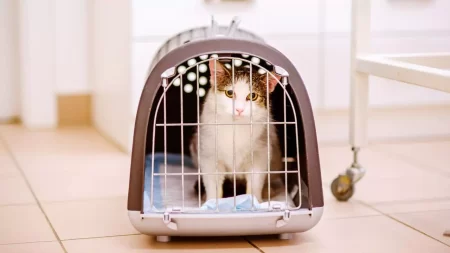Have you ever wondered what might happen if you smile at a cat? Cats are intriguing animals because of the way they use body language to convey meaning.
By deciphering their behavior, we can gain a deeper understanding of their emotions and develop a stronger bond with them.
Understanding cat reactions is a crucial aspect of pet ownership, and smiling at a cat is no exception. In this section, we will explore the impact of smiling on cats and decipher their behavior to understand what happens when we smile at them.
Understanding Cat Body Language: What Do Different Expressions Mean?
Cats are experts at communicating through their body language. Every flick of their tail, arch of their back, and twitch of their ears holds a specific meaning. By interpreting their expressions, we can better understand their emotions and respond accordingly. Here are some key feline expressions and what they might signify:
Purring
Contrary to popular belief, purring does not always indicate happiness. While cats often purr when they’re content, they may also purr when they’re in pain or distress. If your cat’s body language suggests discomfort, such as tense muscles or a tight tail, the purring may be a sign that they’re trying to comfort themselves.
Dilated Pupils
Cats’ pupils dilate in response to excitement or fear. If your cat’s pupils are large and their body is tense, they may be feeling threatened or overwhelmed. Conversely, if their pupils are dilated while they’re playing or receiving affection, it may be a sign of excitement or happiness.
Arching Back
When a cat arches their back, they’re usually either trying to appear larger to intimidate a perceived threat or stretching their muscles in a relaxed state. If your cat is arching their back while growling or hissing, they’re likely feeling defensive or aggressive.
Ears Flat
Flat ears indicate that a cat is feeling fearful, aggressive, or uncomfortable. If your cat’s ears are flattened against their head, it’s best to approach them calmly and give them space until they feel more at ease.
Tail Position
A cat’s tail position can be one of the most revealing indicators of their mood. A tail held high in the air indicates confidence and happiness while a tail tucked between their legs suggests anxiety or fear. A tail twitching slowly back and forth can indicate irritation or impatience, while a rapidly flicking tail usually means the cat is agitated or angry.
Reading cat signals can take time and practice, but by paying attention to their body language, you can gain insights into their emotions and build a stronger bond with your feline companion.
The Impact of Smiling on Cats: Do They Recognize It?
Cats are renowned for their enigmatic and oftentimes inscrutable behavior. As pet owners, we often wonder whether our feline companions recognize and respond to our expressions, including smiling.
Research has shown that cats can perceive and distinguish various human facial expressions, including smiling. However, the extent to which cats recognize and respond to smiling may depend on individual differences and context.
“Cats can differentiate between human facial expressions and may respond differently depending on the nature of the expression and the context in which it is exhibited,” explains Dr. John Bradshaw, a cat behavior expert, and author.
While some cats may respond positively to smiling, others may perceive it as a sign of aggression or submissiveness, depending on the context. For instance, a cat that is unfamiliar with a person may perceive a smile as a threat, while a cat that is accustomed to being petted and handled may respond positively to a smile.
The way cats perceive and respond to human expressions like smiling may also depend on their previous experiences and socialization. Kittens that are socialized to humans at a young age may be more receptive to our expressions, including smiling, while cats that have had negative experiences with humans may be more likely to perceive a smile as a threat.
When analyzing cat reactions to smiles, it’s also essential to consider the context in which the smile is exhibited. A cat that is hungry or anxious may not respond to a smile in the same way as a cat that is relaxed and content.
Despite these individual differences and contextual factors, many cats do recognize and respond to smiling. They may show their recognition by purring, rubbing against their owner, or even reciprocating the smile with a relaxed expression.
By taking the time to understand our feline companions’ unique personalities, experiences, and preferences, we can strengthen our bond with them and develop a deeper understanding of their behavior.
Factors Influencing Cat Reactions to Smiling: Individual Differences and Context
Cats, like humans, have unique personality traits that can influence their reactions to smiling. Some cats may be naturally more sociable and responsive to human interaction, while others may be more independent and prefer to keep their distance. Understanding your cat’s personality and preferences can help you gauge their reaction to your smiling gestures.
Another important factor is the socialization of cats. Cats that have been socialized and exposed to different people and environments from an early age are more likely to be comfortable with human interaction and may respond more positively to your smiles. On the other hand, cats that have not been socialized may be more wary of human interaction and may not react to your smiles in the same way.
Environmental factors can also impact a cat’s behavior and their response to your smiling. For example, if your cat is in an unfamiliar environment, they may be more cautious and less likely to respond to your smiling. Similarly, if your cat is in a stressful environment or experiencing anxiety, they may not be as receptive to your gestures.
Finally, a cat’s familiarity with humans can also play a role in their reaction to your smiling. Cats that have been exposed to a lot of human interaction and are comfortable with human presence are more likely to respond positively to your smiles, while cats that are less familiar with humans may not understand or recognize your gestures.







